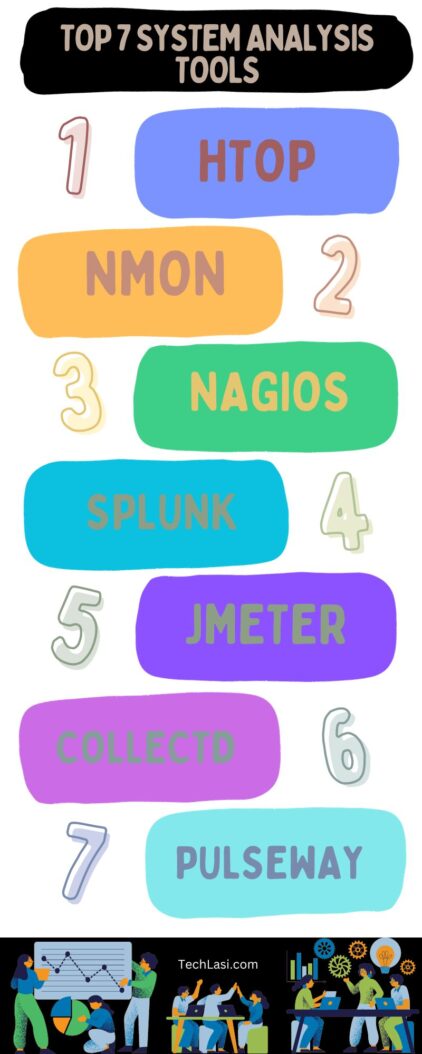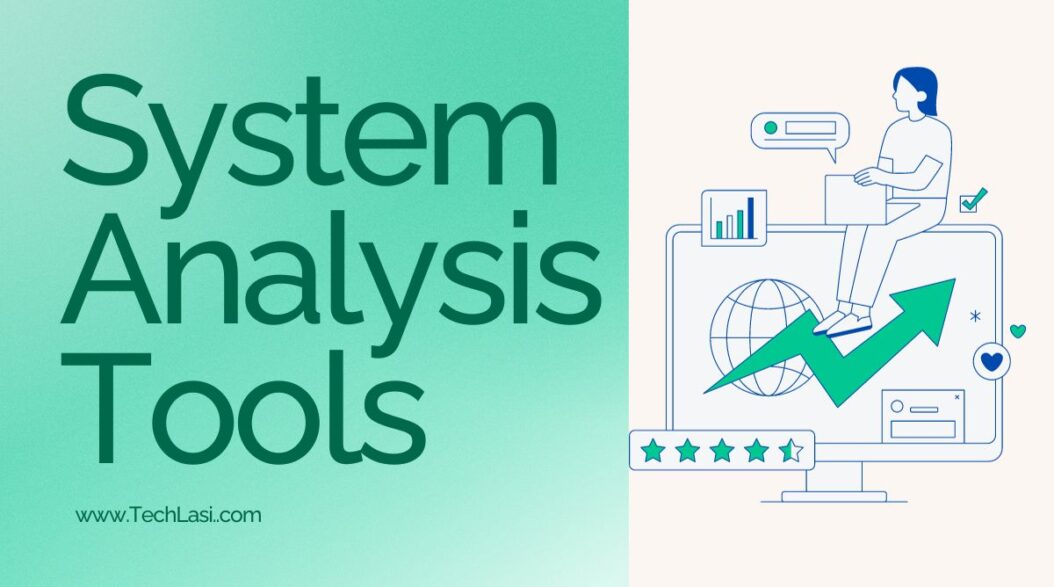Introduction to System Analysis Tools
System analysis tools are vital for examining, evaluating, and optimizing the performance of software systems. As systems grow larger and more complex, having the right analysis tools becomes critical to maintaining efficiency, reducing issues, and planning for future growth. There are a wide variety of useful system analysis tools available, ranging from open source to enterprise-level solutions.
What is system analysis?
System analysis refers to the process of studying a software system to understand its functions, relationships, dependencies, and performance metrics. Analysts typically break down complex systems into smaller components to analyze how they interact. This allows them to identify problems, bottlenecks, and opportunities for improvement. Effective system analysis relies on data provided by specialized tools.
Benefits of using system analysis tools
Some key benefits that system analysis tools provide include:
- Identifying performance issues: Analysis tools monitor key metrics like CPU usage, memory consumption, network bandwidth, etc. Performance bottlenecks and trouble spots can be pinpointed for optimization.
- Improving reliability: Tools can analyze system logs, error reports, and usage trends. This data helps analysts diagnose reliability problems and prevent future issues through proactive fixes.
- Planning capacity: By modeling projected workloads, analysis tools help administrators accurately estimate resource requirements for supporting future demand.
- Optimizing configurations: Tools can determine optimal settings and configurations to maximize system efficiency and stability at lowest cost.
Types of system analysis tools
There are several major categories of system analysis tools based on their approach and functions:
Tracing tools
Tracing tools dynamically monitor and record detailed diagnostic data on a live, running system. This reveals how application components interact frame-by-frame. Popular examples include strace, LTTng, and DTrace.
Profiling tools
Profiling tools sample application statistics like CPU usage, memory allocation, thread activity, etc. at timed intervals. By minimizing impact during monitoring, they show overall performance trends. Top options include VTune, perf, and JProfiler.
Modeling/simulation tools
Modeling/simulation tools create a software model of the target system for experimentation under hypothetical workloads. Queuing theory is often used to simulate response times, bottlenecks, etc. Simulation craft is a simulation tool example.
Top 7 must-have System Analysis Tools 2025
Based on the crucial need for monitoring, optimizing, and planning software changes, these 7 tools comprise an essential system analysis toolkit:

1. htop
htop is an open source, interactive process viewer for Linux. It visually maps out running processes and system resource utilization in real-time, including capabilities like:
- Monitoring CPU and memory usage per process
- Controlling processes (e.g. killing, prioritizing by CPU/RAM usage)
- Analyzing threads, services, tasks, etc.
With both text- and graphics-based views, htop makes it easy to interpret system state and performance at a glance. Its lightweight interface introduces minimal overhead.
2. nmon
Similar to htop, nmon is a command-line system monitor for Linux. Its advantages include:
- Visualization of long-term performance trends
- Output to CSV format for further analysis
- Multi-platform support for AIX, Linux, Windows, etc.
Nmon adds time-series data charting with detailed statistics for slicing-and-dicing system analysis. Its data logging facilitates monitoring tasks like benchmarking configuration changes.
3. Nagios
Nagios is a widely trusted open source monitoring framework. It provides centralized awareness for multiple server, network, infrastructure, and application layers. Notable options consist of:
- Monitoring networks, CPUs, disks, services, web servers, etc.
- Triggering configurable alerts for outages, breaches, etc.
- Assessment reporting for infrastructure auditing
- Extensibility via third-party plugins
With robust configuration possibilities across infrastructures, Nagios is hugely valuable for early issue detection, diagnostics review, and IT planning.
4. Splunk
Splunk dominates the commercial logging and reporting scene. By consuming terabytes of system/network/application logs, Splunk reveals operational intelligence like:
- Application usage statistics
- Geographical activity distribution
- Error profiling and root cause analysis
- Security monitoring for breaches
Via machine learning-enhanced correlations, Splunk rapidly extracts insights from huge datasets. An extensive ecosystem of third-party apps and integrations enable customizing Splunk to each organization’s needs.
5. JMeter
JMeter is a favorite open source solution for load testing and analyzing system performance under strain. Key features include:
- Ability to simulate hundreds or thousands of concurrent users
- Support for testing application areas like Web, SOAP, REST, FTP, databases
- Extensive real-time statistics and logging for results analysis
By exposing capacity limits and system weak points, JMeter helps developers optimize software resilience and plan infrastructure growth.
6. Collectd
Collectd is a lightweight open source daemon for system statistics collection. It captures performance data like:
- CPU load
- Disk usage
- Memory utilization
- Network traffic
With a focus on portability, collectd easily integrates with tools like Graphite, MySQL, and Apache for visualization and monitoring. This makes collectd a flexible platform for consolidated system analytics.
7. Pulseway
Pulseway offers a unified view of core system health metrics across servers, networks, and applications via an intuitive cloud-based dashboard. Benefits include:
- Optimization recommendations based on usage analytics
- Historical data for comparison
- Mobile app for alerts and access from anywhere
- Support for Windows, Linux, macOS, etc.
By centralizing vital signs for IT infrastructure into an easy monitoring platform, Pulseway simplifies staying on top of system performance issues as they emerge.
Conclusion
Careful system analysis should be an integral part of any software environment. The tools listed above comprise a robust toolkit covering essential monitoring, testing, optimization, and planning needs. Both open source and commercial solutions fit a variety of budgets and IT ecosystems. By actively employing these system analysis tools, administrators can spot performance issues early, diagnose problems faster, and engineer higher-efficiency infrastructure operations. This reduces costs while improving system stability, security, and end-user experiences. As new technologies and methodologies emerge, analysts can continue expanding their analytical capabilities to match the growing complexity of modern IT environments. But with a firm handle on core system analysis, technology teams gain an invaluable advantage for maximizing success.
FAQ
What are the main functions of a system analysis tool?
The core functions of system analysis tools include monitoring performance metrics, diagnosing problems, identifying bottlenecks/inefficiencies, capacity planning for future growth, and optimizing configurations.
What key statistics can these tools track and analyze?
Common analytics tracked include CPU/RAM utilization, disk I/O, network bandwidth, application response times, system logs, error rates, security events, simulated workloads, and more.
What are some benefits of effective system analysis?
Key benefits include lowered costs through efficiency gains, improved stability and uptime, faster troubleshooting of issues, better security and compliance, and enhanced capacity planning.
What skill sets help analysts select and implement the right tools?
Important skills include understanding the application stack, infrastructure components, and key performance indicators, as well as expertise in areas like scripting, statistics, visualization, testing methodologies, and tool integration.
How can system data be visualized and shared with stakeholders?
Tools integrate with solutions like Grafana for dashboard building, Graphite and MySQL for time-series databases, and apps like Pulseway for mobile alerts and access. Reports and exports facilitate sharing insights.
- What is One Challenge in Ensuring Fairness in Generative AI: The Hidden Bias Problem - August 15, 2025
- How Small Language Models Are the Future of Agentic AI - August 15, 2025
- What Are the Four Core Characteristics of an AI Agent? - August 15, 2025

